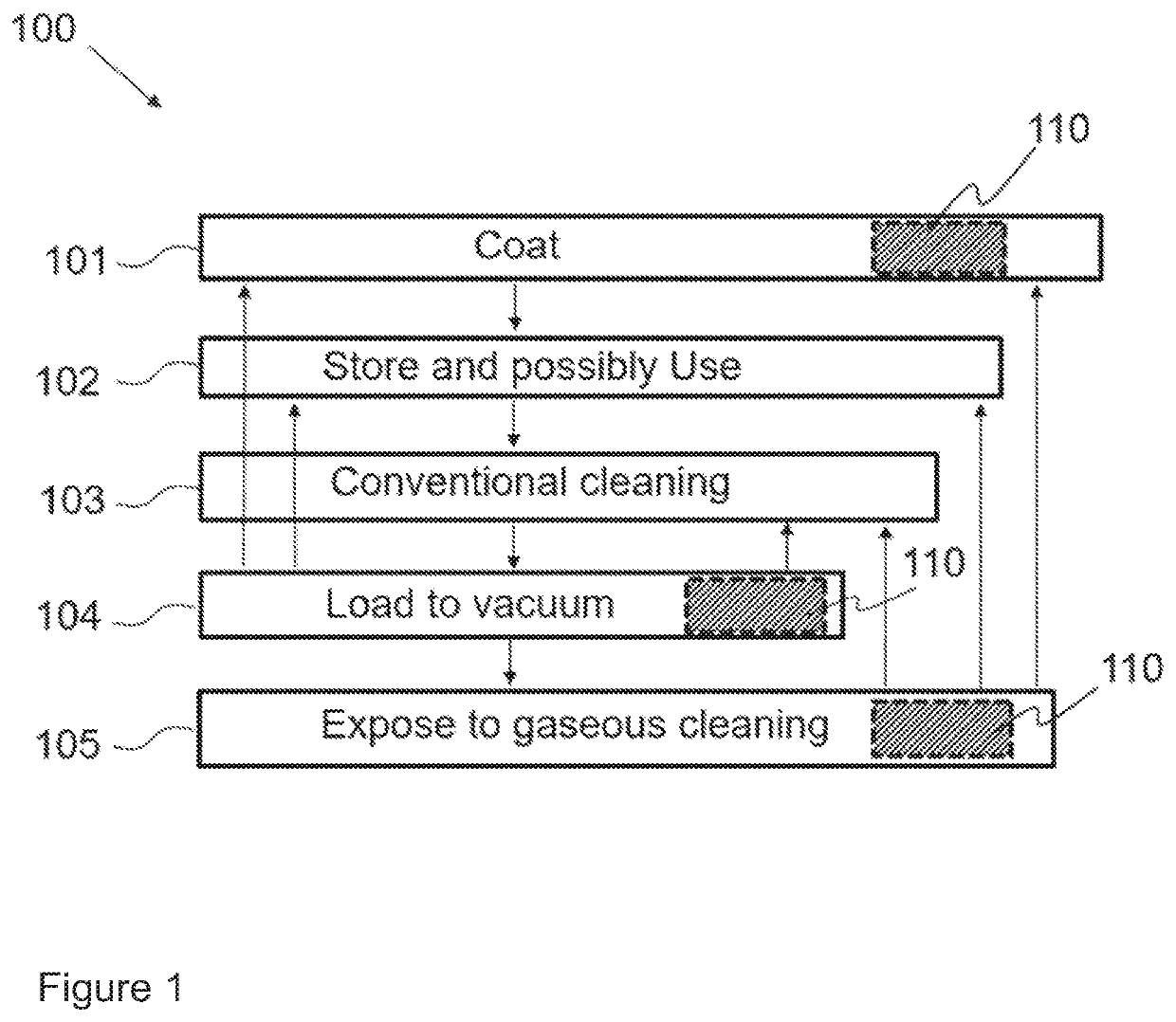Method and apparatus for cleaning medical instruments and for detecting residue thereon
a technology for cleaning medical instruments and residues, applied in the field of equipment and methods for cleaning medical instruments, can solve the problems of difficult sterilization, difficult coagulation of bleeding or other purposes, complex devices of flexible endoscopes, etc., and achieve the effects of improving the performance of pipe-like instruments, enhancing the flow of fluids, and high aspect ratios
- Summary
- Abstract
- Description
- Claims
- Application Information
AI Technical Summary
Benefits of technology
Problems solved by technology
Method used
Image
Examples
Embodiment Construction
[0035]The invention, according to one aspect, pertains to provision of a method for cleaning a medical instrument and for detecting residue thereon (FIG. 1). By the term “residue”, we refer to any essentially solid remainings or debris, primarily of organic nature, accumulated or lodged on / in the medical / surgical instrument during its normal use, e.g. cell mass, cellular network debris, ambient contamination and the like. Due to the nature of the instrument to be cleaned, the residue to be detected mostly organic; however, the method can be adjusted such, as to detect essentially inorganic matter and / or a combination of organic and inorganic residue.
[0036]The method starts with obtaining an item, such as a medical instrument. In present disclosure, the medical instrument thus obtained is a non-sterile medical instrument stored (in a storage room, for example) and optionally used (102) or a medical instrument sterilized by conventional methods (103). By conventional use we refer to u...
PUM
| Property | Measurement | Unit |
|---|---|---|
| pressure | aaaaa | aaaaa |
| pressure | aaaaa | aaaaa |
| pressure | aaaaa | aaaaa |
Abstract
Description
Claims
Application Information
 Login to View More
Login to View More - R&D
- Intellectual Property
- Life Sciences
- Materials
- Tech Scout
- Unparalleled Data Quality
- Higher Quality Content
- 60% Fewer Hallucinations
Browse by: Latest US Patents, China's latest patents, Technical Efficacy Thesaurus, Application Domain, Technology Topic, Popular Technical Reports.
© 2025 PatSnap. All rights reserved.Legal|Privacy policy|Modern Slavery Act Transparency Statement|Sitemap|About US| Contact US: help@patsnap.com

